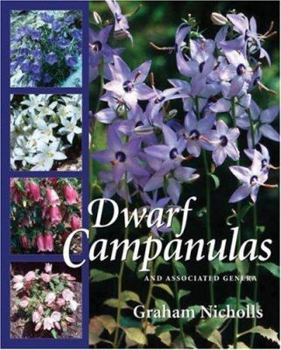Dwarf Campanulas: And Associated Genera
Campanulas have long been a gardeners' favourite, their spectacular summer performance earning them a place in the herbaceous border year after year. Here their lesser-known relatives, the smaller dwarf campanulas, take centre stage. Everyone who grows campanulas will enjoy this book, finding uses for the diminutive yet exuberant forms at the front of the border as well as in rock gardens, alpine houses, troughs, and containers. More than 200 "Campanula" species and hybrids are described, and specialists and collectors will delight in the descriptions of rare and little-documented plants and devour the information about the plants' wild habitats. Color photographs enhance the text, encouraging gardeners to experiment with dwarf campanulas in a wide range of garden situations and appreciate the diversity of this rewarding group of plants.
Format:Hardcover
Language:English
ISBN:0881928100
ISBN13:9780881928105
Release Date:October 2006
Publisher:Timber Press
Length:272 Pages
Weight:0.15 lbs.
Dimensions:9.3" x 0.9" x 7.3"
Customer Reviews
1 rating
Not perfect, but the best
Published by Thriftbooks.com User , 16 years ago
For those wondering which book(s) to buy to learn about Campanulas, there are essentially three choices: Lewis & Lynch, Crook, and Nicholls. If your interest is garden Camps, the English cottage kind, L & L is the one for you. It has full-page color photos, cultivation and propagation info, and details cultivars of popular species. But the majority of Camps are small alpine plants, and I divide the rock gardeners interested in them into three categories: casual, serious, and fanatic (let's say "enthusiast", instead), the category in which I include myself. For the casual Camper, I recommend Nicholls. Lots of color photos, lots of species, lots of info, up to date. Not perfect. He describes a species as coming from limestone crevices and growing well in tufa, and in cultivation "requires a gritty lime-free soil". Maybe,seems unlikely. Many instances of species A described as being related to sp. B, sp. B's text says it's related to C, with no mention of A, sp. C says it's related to A "and others" plural, with no mention of B and one wonders what the "others" are. Many instances of species descriptions omitting pH preference or other details of cultivation requirements. However,the text is conversational, not technically laid out, so it's understandable that not all details would be included in each description. And I've reread the book many times and used it for cross-referencing, so I'd notice these things where others might not. But if you're trying to get species' relationships straight in your head, or, on a practical level, if the pH preference isn't specified for a species you have and you'd like to look up related species to see what _they_ like, it can be frustrating. But the casual Camper won't notice, or care. For the serious Camper, I recommend Nicholls and Crook. Crook is almost 60 years old, the photos are b & w (and in later reprints fuzzy), at least half of the text is either obsolete or pointless (he'll take three paragraphs to describe a plant only to then tell you it's impossible to grow or a ineradicable weed). But he's valuable for cross-referencing, and, well, it's CROOK for cripes sake, he's a classic! He suffers from faulty logic at times, but there's still a wealth of knowledge in there. For the, er, enthusiast, you might want all three. I mean, you can get both the Crook and the L & L for about $10 each! There's always a case where the other two let you down and the 3rd will have that little tidbit of factoid you needed to plan your perfect trough! Crook is the only one to mention that C.elatines is alone in all the garganica group in avoiding lime. Good to know!






